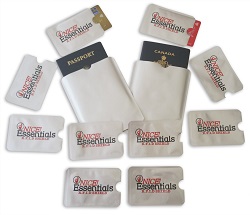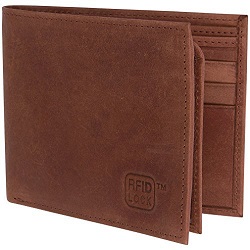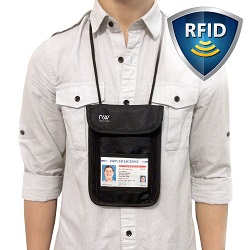In this day and time of high tech gadgets, RFID chips are present in all sorts of things in your life. You can find them in implanted medical records, passports, credit cards, debit cards, library books, grocery goods, security tags, implanted pet details and with time the list just grows. Some schools now require their students wear RFID tags.
The amount of information that could be learned about you or your child from these chips is really quite a lot.
There are a few main types of RFID chips:
- Passive Tags – require a radio signal to be emitted from the receiver in order to be read. Passive tags operate on a small distance and can’t transmit a lot of data. An example of these type tags are door passes.
- Active Tags – have on-board batteries and can therefore actively transmit their data over a larger distance. Active tags can transmit a larger amount of data than passive tags. An example of these type tags are toll passes mounted in cars.
Peek Into Your Wallet
Your credit cards and debit cards could have a tiny computer chip and radio antenna to transmit account information from your card, even when you are not using them to pay for your shopping.
With this type radio frequency technology you can simply wave your credit card in front of a store scanner rather than having to swipe it through a reader. And, you can do this without even taking it out of your wallet.
The RFID chip technology does not require line of sight to work, meaning that the chip and the reader merely need to be within range of each other to communicate.
Where these type cards provide you and the merchant a convenience they also open you up to electronic pick-pocketing unless you are using RFID blocking protection.
How do you know if your cards have these RFID (radio frequency identification) chips? “PayPass” is used by MasterCard to identify these cars. The term “Blink” was coined by Chase bank. Some contactless cards which use a RFID chip might simply have a symbol on the card consisting of four curved lines. According to the Nielson Report there are 35 million contact less chip cards in circulation in the U.S.
Skimming Cards
These type cards can be skimmed without ever leaving your pocket. The information that these cards communicate to the store card readers can be enough to create a counterfeit card by electronic thieves and then be used to make an unauthorized purchase against your credit card or debit card account.
The basic equipment needed for electronic pick-pocketing is readily available to would be crooks. From just a few inches away your account data on your card can be read even if the card is inside your wallet or purse.
For most of the contactless cards and most RFID enabled cards, the security codes are designed to change with every transaction, so that even if a card is counterfeited, it would only work for one fraudulent transaction.
However, repeatedly scanning a card that is lost, stolen or intercepted in the mail produces multiple security codes for multiple purchases.
And if you have multiple cards electronically pick-pocketed from your wallet then you could have multiple fraudulent transactions to deal with.
How The Crooks Work
- Setup – Thief connects a battery-powered card reader to a netbook that is concealed in a briefcase.
- Swipe – Crook carries briefcase close to a consumer’s pocket or purse, where contactless cards might be carried.
- Display – Then the card information obtained from the swipe is displayed on a computer attached to a magstrip-writing device.
- Clone – A blank magstripe card is put through the device to make a counterfeit card.
- Purchase – The new card is then used to make a purchase using your credit / debit card information.
How To Protect Your Information
As far as credit cards and debit cards are concerned you can purchase and use a RFID blocking wallet which are marketed for both men and women. They are especially nice to give to your teenage children to whom you have entrusted with a credit or debit card.
The other option is to ask for cards that are not RFID-enabled and see if your credit card issuer will honor your request.
Some people also try to make their own blocking wallet by lining the inside with kitchen aluminum foil. This will give you some protection but generally means that the scanner has to be a lot closer to you to get your infomation.
Not all RFID-blocking wallets are made equal and some are more effective than others. In addition, even the most effective RFID-blocking wallet may fail due to wear and tear or user error. Where these products will help keep your private and financial information safe they are no replacement for safe habits and exercising caution.
For those of us who are very busy which causes us to tend to be forgetful about some things that we should be paying attention to, every pre-caution is a plus.
Does Your Travel Require A Passport?
Another place where your identity information is stored is in RFID passports.
If on the cover there is a rectangle with a circle and a line through it your passport contains an RFID chip that can be read from a distance.
You can get a RFID blocking passport cover or sleeve or you can destroy the RFID chip.
If you like the convenience of the RFID technology then you might want to opt for the passport cover or passport sleeve.
The information carried in the RFID chip of your passport varies from country to country. For Americans a single reference code to a file the government keeps on you and can be referenced at passport control is the only thing stored in the passport RFID chip. Most other countries store data directly on the chip itself. For Europeans this typically means all of the information about you inside of the passport (name, date of birth, etc.) plus your photo and fingerprints.
Additional Selections of RFID Blocking Wallets and RFID Blocking Passport Protectors
Shop RFID Blocking Wallets



